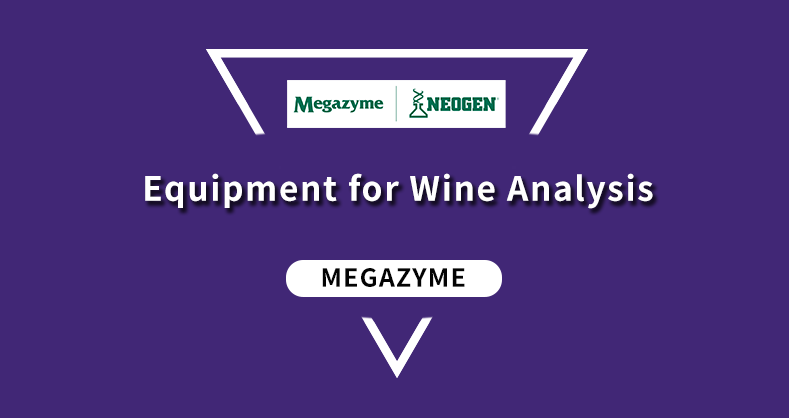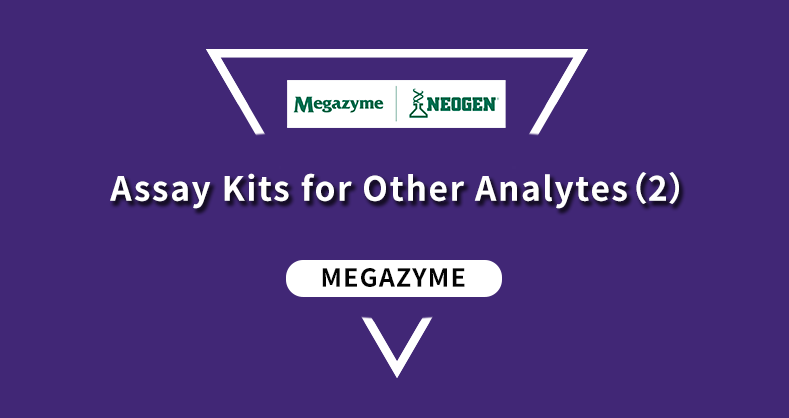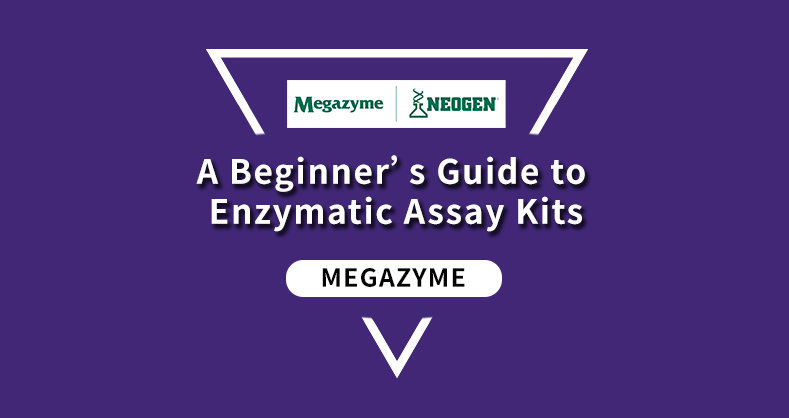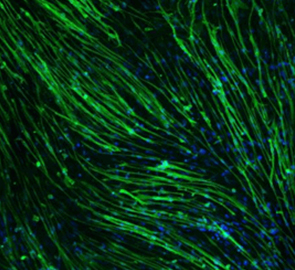【Megazyme】A Beginner’s Guide to Enzymatic Assay Kits
A Beginner’s Guide to Enzymatic Assay Kits
Megazyme’s enzymatic assay kits are used to measure the quantities of specific analytes (substances) in a sample (e.g. wine).
In general terms, enzymes are catalytic proteins that convert one compound into another. Such reactions frequently occur without any visible sign that they have taken place. However, (as with Megazyme kits) certain enzymatic reactions result in an increase or decrease in the absorbance of the reaction solution.
▍▏Absorbance
The absorbance of a solution dictates the amount of light that can pass through the solution. Absorbance can be measured by absorption spectroscopy, which uses a spectrophotometer (e.g. the MegaQuant™ Wave, pictured below), auto-analyser or microplate reader.

When a sample is tested for a specific analyte using a Megazyme assay kit, the enzyme(s) used in the kit act specifically on that analyte. The resulting absorbance change measured in the reaction solution is directly proportional to the amount of the analyte present. The absorbance value is then used to calculate the amount of analyte in the original sample.
▍▏The Spectrophotometer
The spectrophotometer is a powerful analytical instrument because it can measure changes in absorbance very accurately and quickly. Modern models are often pre-programmed with software to lead the user through enzymatic assays step by step, making the spectrophotometer user-friendly as well as accurate.
▍▏How the Spectrophotometer Works
The enzymatic analysis reaction itself is performed in a plastic or glass cuvette that sits between the source of light and the light detector inside the spectrophotometer. A known amount of light is passed through the cuvette and the amount that emerges is quantified by the detector.
The change in intensity as the light passes through the reaction solution in the cuvette is recorded as an absorbance reading, used in later calculations.
▍▏Using an Enzymatic Assay Kit
Megazyme enzymatic analysis assay kits generally contain all reagents necessary to perform the assay, e.g. buffer, cofactor(s), trigger enzyme and standard solution. The reagents are clearly labelled as shown in Figure 1, and are shipped in an easy-to-use form that is stable for over 2 years (even while in regular use).
Comprehensive, step-by-step instructions for sample preparation, set-up, and assay procedure are enclosed in the kit data booklet. Megazyme also publishes video tutorials demonstrating how to use our kits and equipment.

▍▏Building a Basic Winery Laboratory
Some basic laboratory equipment is needed to carry out an assay. For example, for the Ethanol Assay Kit (K-ETOH) pictured above, the wine analyst would require access to the following:
1. Spectrophotometer and disposable cuvettes
2. Vortex mixer
3. Analytical balance (highly sensitive weighing scale)
4. Pipettor and micro-pipettor
5. Volumetric flasks
6. Filter papers and distilled water
All of these components are widely available, with very low running costs once the initial investment in equipment is made.

▍▏Performing an Enzymatic Assay with a Spectrophotometer
During a typical enzymatic analysis, deionised water is mixed with buffer, cofactor and sample. An absorbance reading (A1 ) is taken just before addition of the “trigger” enzyme (specific for the analyte in question), after which the reaction takes place (see figure 2).

When the reaction has finished (i.e. the “endpoint” has been achieved), a second absorbance reading is taken (A2 ).
The difference between these two absorbance readings (i.e. A1 - A2 ) is called the change in absorbance (or ∆A) and is directly related to analyte content.
It is this value, after correction with a blank reading (reaction containing no sample), that is used to calculate the concentration of the analyte in the sample. using a simple factor (e.g. 0.2535 in the case of the acetic acid AK/PTA format).
Results are typically expressed as g/L.
▍▏Completing the Calculation
Some spectrophotometers (e.g. the MegaQuant™ Wave) will perform the calculations automatically. When using Megazyme assay kits with other analysers, calculations can either be performed manually as illustrated below or by using our free and convenient “Mega-Calc™” (Excel™-based calculator), downloadable from the product page on the Megazyme website (www.megazyme.com). A sample manual calculation is shown below.

点在看,传递你的品味














